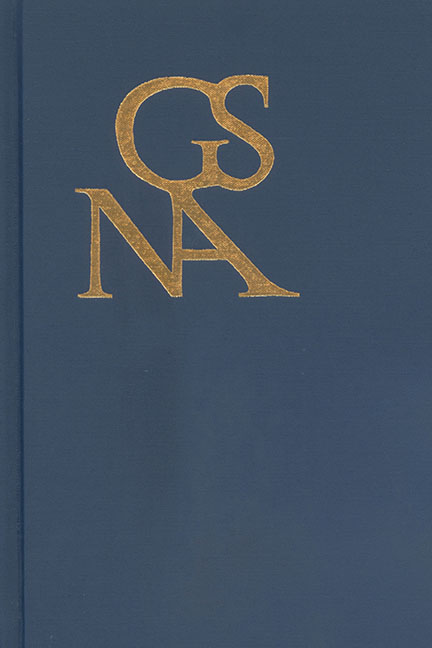Disinterested Love: Ethics and Aesthetics in Karl Philipp Moritz’s “Versuch Einer Vereinigung Aller Schönen Künste Und Wissenschaften Unter Dem Begriff Des in Sich Selbst Vollendeten”
Published online by Cambridge University Press: 28 October 2020
Summary
Autonomy and Disinterestedness
AESTHETIC AUTONOMY REMAINS one of the most persuasive and prolific ideas in the reception of German neoclassicism. A quick glance at the vast amount of research on the subject reveals that it is, in fact, one of the defining traits, or perhaps the defining trait, of this particular movement in the history of art and literature. General surveys of the period, often also referred to as Weimar classicism or the Age of Goethe, as well as “close readings” of works by individual writers, such as Goethe, Schiller, and Humboldt, single out aesthetic autonomy as the “Kernstück der Weimarer Klassik” (core of Weimar classicism). Wilhelm Voßkamp claims that “kein anderes Konzept wird heute als so epochenspezifisch für die Weimarer Klassik angesehen als das der ästhetischen Autonomie” (no other concept is perceived as more characteristic for the epoch of Weimar classicism than aesthetic autonomy). Gerhard Sauder goes further and names autonomy as the “Norm der Weimarer Klassik” (the norm of Weimar classicism). And that is just scratching the surface. While many of the most notorious themes of the so-called “Klassik-Legende,” a phrase coined by Reinhold Grimm and Jost Hermand in their influential 1971 anthology, have not stood the test of time, aesthetic autonomy remains a persuasive and attractive idea to many a scholar. As a result, in a recent attempt to once again settle the score with this oppressive legend, Klaus L. Berghahn defines aesthetic autonomy as the very foundation of classical-Romantic aesthetics.
A key figure in the history of aesthetic autonomy is Karl Philipp Moritz (1756–1793), who, though sometimes overlooked, was a prime mover of Weimar classicism. His essay “Versuch einer Vereinigung aller schönen Künste und Wissenschaften unter dem Begriff des in sich selbst Vollendeten” (1785) is the first of many texts that posterity has declared to be the origin of modern aesthetic autonomy—his crowning achievement being the 1788 booklet Über die bildenden Nachahmung des Schönen, which Goethe quoted enthusiastically. Thus, the essay supposedly paved the way for Immanuel Kant's subsequent transcendentalization of aesthetics and the Romantics’ liberation of art and of the artist.
- Type
- Chapter
- Information
- Goethe Yearbook 27 , pp. 63 - 82Publisher: Boydell & BrewerPrint publication year: 2020



